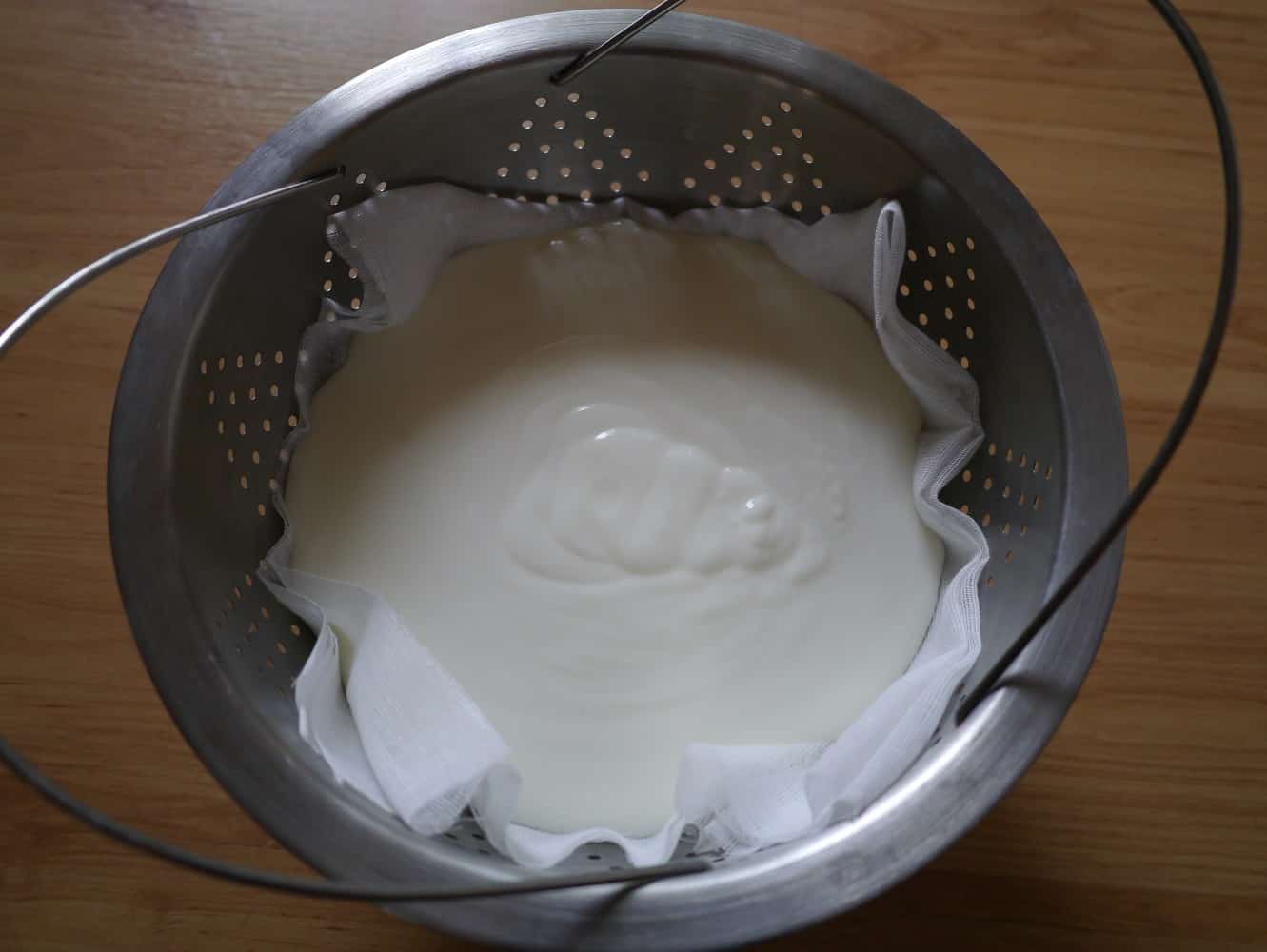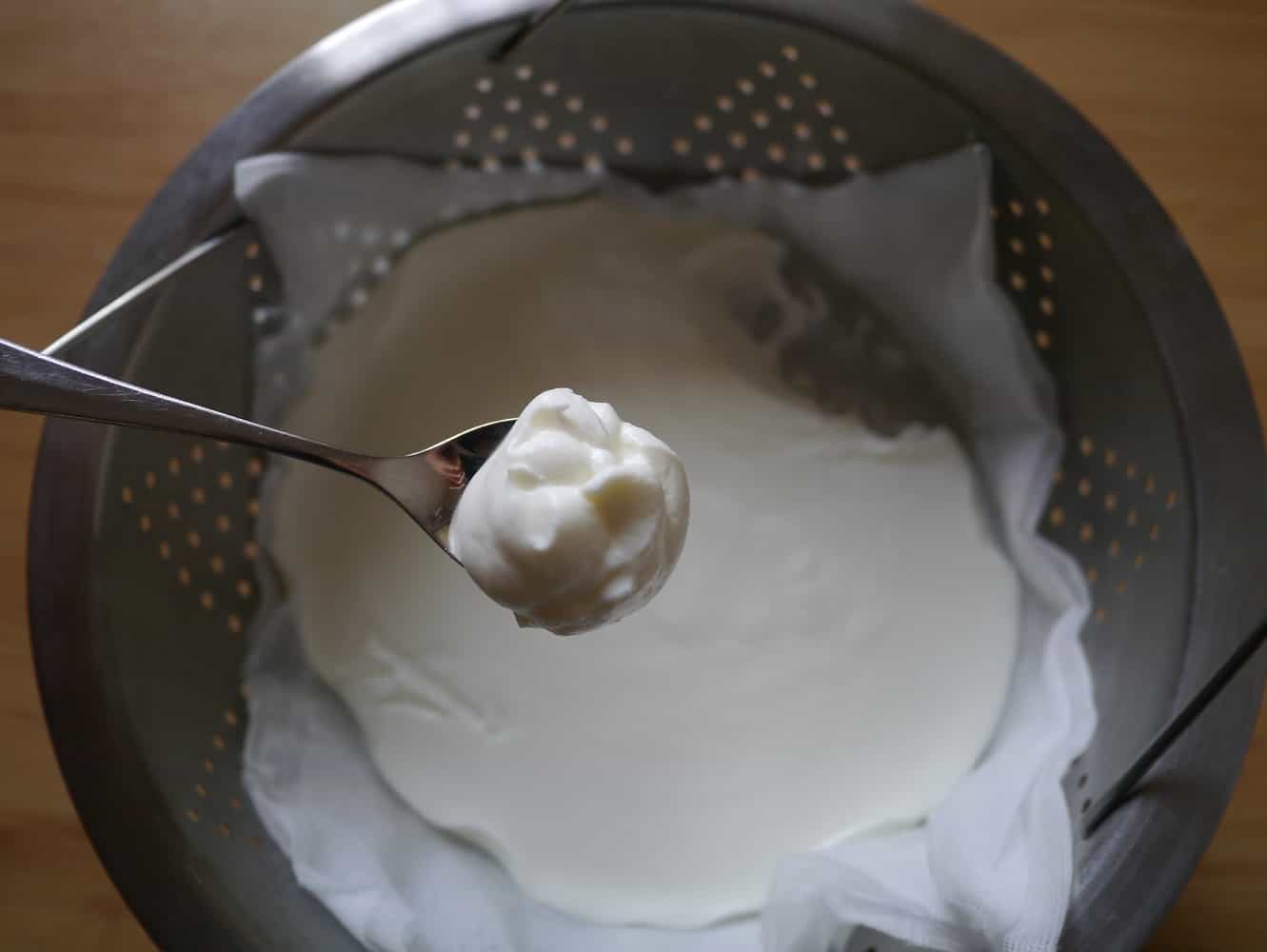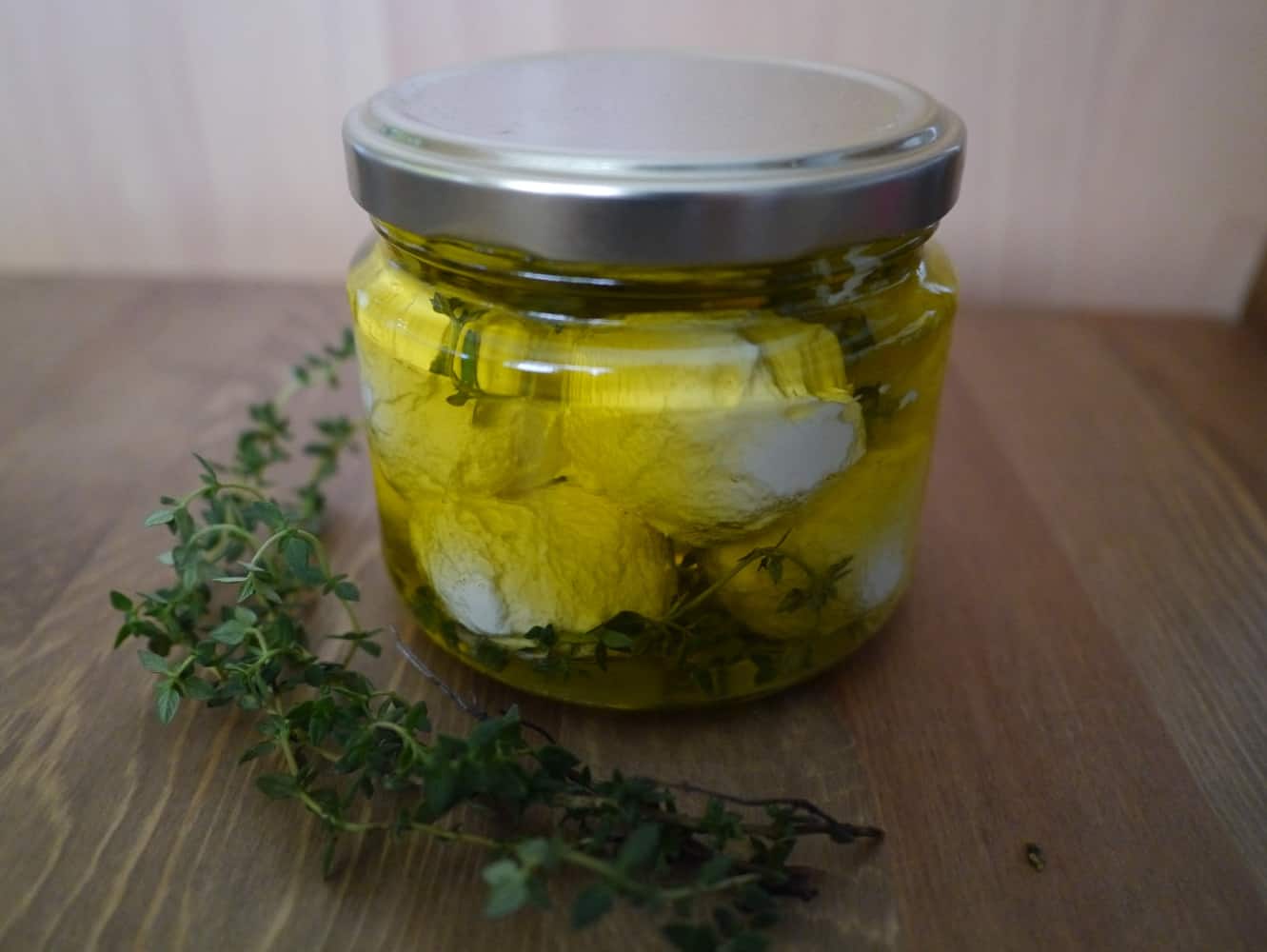How to Make Labne (Cheese) and Greek-style Yoghurt
I recently started making my own yoghurt (you can read about it in this post). The next part of my yoghurt adventure is making Greek-style yoghurt and labne. The great news is that making it requires no additional ingredients and no cooking either!
In case you’ve never heard of it before, labne (also spelled labneh or lebni) is a simple fresh-tasting cheese made from yoghurt that originates from the Middle-East. It is made by straining the yoghurt to drain off the liquid (whey) and leave the solids (curds). The longer that yoghurt is strained, the firmer the consistency. Labne can be made after 4-6 hours and up to 3 days; thickened Greek-style yoghurt is the intermediate product formed after straining for 2-3 hours.
How is this different to shop-bought Greek-style yoghurt?
There’s no additives! Real natural yoghurt is fairly thin and runny. Draining the liquid off is the natural way to make the yoghurt thicker, but the final volume is much smaller. 1 litre of milk will make 700ml yoghurt, which if strained for several hours will result in around 350ml Greek yoghurt. To save money, instead of straining yoghurt, manufacturers may leave the whey and use additives to bulk and thicken the yoghurt artificially, including gums, gelatine, starch and milk powder. In Australian supermarkets it is almost impossible to find any yoghurt for sale without one or more of these additives. In the UK the market is much better and natural Greek-style yoghurt is more readily available.

Let’s get making!
You will need: 1 litre yoghurt, muslin (cheesecloth), a bowl and a sieve or colander. If you don’t have any muslin, you could improvise with other (very clean) material such as an old sheet or tea towel.
How to make thick Greek-style yoghurt
Fold the muslin so it is 4 layers thick and place in the colander. Place the colander over a bowl.
Pour the yoghurt onto the muslin. The whey will begin dripping into the bowl below straight away.
Leave for 2-3 hours until thickened.
Place in a glass jar and store in the fridge. The yoghurt will last for several days.
Note: if your room is not too warm it is fine to leave out on the side whilst the whey drips out. If it is a particularly hot day or you would prefer, place the bowl in the fridge instead of leaving at room temperature.
How to make labne
This is a lengthier version of the previous recipe, and it starts in an identical manner. By leaving the yoghurt for longer you will make labne instead of Greek-style yoghurt.
Fold the muslin so it is 4 layers thick and place in the colander. Place the colander over a bowl.
Pour the yoghurt onto the muslin. The whey will begin dripping into the bowl below straight away.
After 2-3 hours, take the four corners of the muslin to make a parcel, and hang over the colander to aid dripping. I used a clothes peg.
After 6 hours, the yoghurt will have thickened enough to make a soft cheese. You can leave this longer if you want the cheese firmer – leave for up to 2 days in the fridge to make a really firm labne.
When you are happy with the consistency, remove the curd ball from the muslin. You can eat it straightaway or store covered in olive oil in a jar in the fridge – it will keep for up to a week.
Storing your labne with herbs and olive oil:
You will need a clean glass jar, olive oil and some fresh herbs.
Cut the curd into pieces and shape into walnut-sized balls with your hands.
Add the balls to a clean jar along with some herbs, and cover with olive oil.
This will keep in the fridge for up to a week.
Using what’s left – the whey
I used 700ml yoghurt to make my labne, which made enough cheese to fill one small jar, and I was left with 350ml of whey.
This cloudy yellow watery liquid (which has a similar taste to yoghurt) contains proteins, minerals such as calcium, potassium and B2 as well as friendly lactobacteria, making it a great probiotic. Don’t throw it away!
So…what should you do with it then? Well. It can be drunk as a probiotic drink. It can be used to replace the water when making bread products, or to replace the buttermilk in other recipes. You can use it to soak lentils and grains. Apparently. I wouldn’t like to recommend any of these things without trying them out myself first though, so expect a follow-up blog post in the coming weeks with some helpful tips with what to do with all the leftovers! In the meantime, you can leave it in the fridge in a sealed glass jar for several weeks.
[leadpages_leadbox leadbox_id=1429a0746639c5] [/leadpages_leadbox]



















Yes, I’ve used whey for making porridge – it’s not bad! You don’t want to use too much though as it has quite a strong taste. I think it’s best to dilute it down a bit.
You can use the whey as a fermenting agent for foods such as sauerkraut. It’s very easy to do and is outlined in the book Nourishing Traditions by Sally Fallon. I’ve fermented many different foods with it.